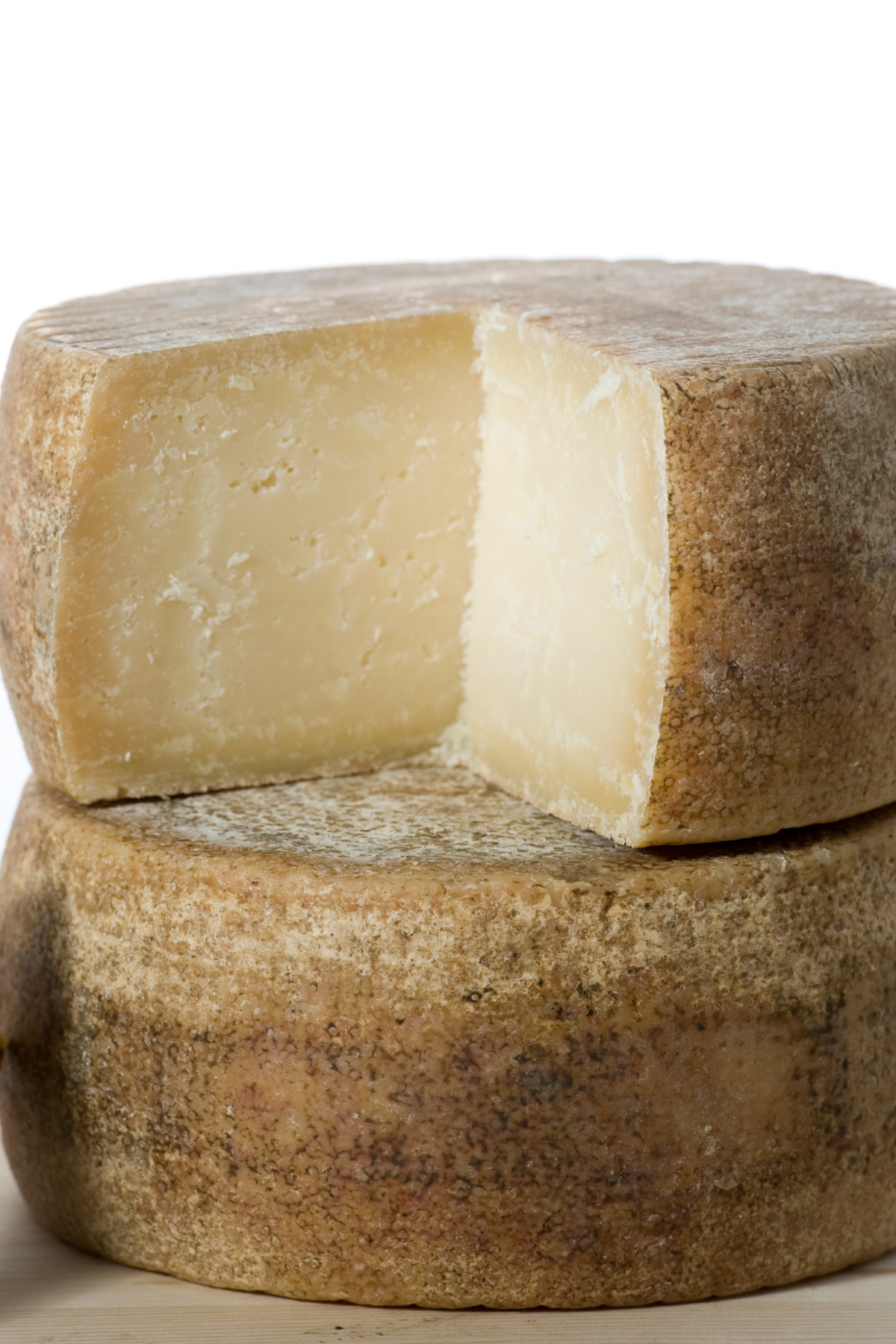Searching for Pecorino substitutes? Here are 14 cheeses to use if your kitchen's out of Pecorino.

Pecorino Romano cheese shines among Italian cheeses. It's bold, salty, and perfect for many dishes. This hard, milk-based cheese is a hero in pasta, salads, or with olive oil. Made from sheep's milk, it's a favorite in both kitchens and restaurants.
Pecorino isn't just Romano. There's Sardo and Toscano, each with their own taste and texture. They're all hard, sheep's milk cheeses from Italy. They pair well with Italian staples, enhancing dishes with olive oil or red wine.
Can't find Pecorino Romano or its relatives? Try Parmigiano Reggiano. It's a good backup, adding depth to your dishes. Knowing substitutes keeps your cooking on point. Whether it's for pasta or pairing with red wine, get to know Pecorino cheeses and their alternatives.
Jump To
- What Makes Pecorino Cheese Special?
- Where does Pecorino come from?
- What does Pecorino taste like?
- What is a substitute for cacio e pepe pecorino?
- What is a substitute for pecorino Romano cheese in carbonara?
- Can I substitute Asiago for pecorino cheese?
- 14 Pecorino Romano Cheese Substitutes
- FAQ'S
- More articles like this:
What Makes Pecorino Cheese Special?
Pecorino is Italian for "sheep's milk." It's a hard cheese from Italy, made from ewe's milk. It's known for its strong flavor and texture. The cheese smells strong but adds richness to dishes. Italy's land and herding traditions influence its quality. There are many types of Pecorino, each with a unique taste and use.
Where does Pecorino come from?
Pecorino cheese comes from Italy, made with care for over 2000 years. It's from places called Tuscany, Lazio, and Sardinia. This cheese is special because it's part of Italy's food tradition.
To make it, people stir the cheese mix by hand, add salt, and shape it. Then, they let it get old in a special way. In the end, we get a cheese that's full of tradition and yummy taste.
What does Pecorino taste like?
Pecorino cheese is bold, salty, and tangy. It ages to become sharper and crumbly. Each type offers flavors from nutty to spicy, fitting any taste. Some find it a mix of Parmesan and cheddar. It's versatile—great on pasta, in salads, or with wine.

What is a substitute for cacio e pepe pecorino?
No Pecorino for cacio e pepe? Try Grana Padano or Parmigiano-Reggiano. They're salty and nutty too. They're milder, so add extra for that kick.

What is a substitute for pecorino Romano cheese in carbonara?
Out of Pecorino Romano for carbonara? Use Parmigiano-Reggiano. It adds rich, nutty flavors to the creamy sauce. It's less salty, so tweak your seasoning.
Can I substitute Asiago for pecorino cheese?
Need a Pecorino swap? Try Asiago. It's nutty, a bit sweet, and aged. It's milder, so add more for boldness. Perfect when you don't need Pecorino's tang. Adds unique flavor to your dishes.

14 Pecorino Romano Cheese Substitutes
1. Parmigiano-Reggiano (Italy)
Parmigiano-Reggiano, the king of Italian cheeses, hails from the regions of Parma, Reggio Emilia, Modena, and parts of Mantua and Bologna. It's aged longer than Pecorino, offering a nuttier and less salty taste. Perfect for those looking for a more subtle alternative.
2. Grana Padano (Italy)
Another Italian classic, Grana Padano, shares similarities with Parmigiano but offers a milder and less crumbly texture.
Grana Padano might just be your next kitchen staple, hiding in plain sight with its rich heritage and delightful taste.
This cheese, another Italian masterpiece, shares a similar texture to Pecorino, with a slightly less salty bite but a complexity that's just as engaging. Its grainy texture and buttery nuttiness make it a prime candidate for grating over your favorite dishes, seamlessly blending into sauces and soups alike. Opt for Grana Padano when you desire a touch of Italian sophistication without overwhelming your palate.
3. Asiago (Italy)
From the Veneto and Trentino regions, Asiago offers a variety of flavors based on its age. Young Asiago is smooth and sweet, while aged Asiago (Asiago d'Allevo) brings a sharper, more Pecorino-like taste.
4. Piave (Italy)
Named after the Piave River in Italy's Veneto region, Piave cheese is just so good! It's got that luxurious texture and a sweet, full-bodied flavor that makes it stand out. This Italian cheese is aged to perfection, and let me tell you, Aged Piave is like a bold version of aged Pecorino. If you're a cheese lover looking for a flavorful adventure, this one's a winner!
5. Manchego (Spain)
Manchego, a Spanish classic, offers a departure from the Italian lineage, yet it finds common ground with Pecorino through its bold and distinctive flavor profile.
Made from the milk of Manchega sheep, this cheese brings a rich, creamy texture coupled with a tangy undercurrent that can truly elevate a dish.
It's the hint of nuttiness and the subtle sweetness that makes Manchego a fascinating substitute, particularly in recipes where Pecorino's punchy presence needs a softer counterpart.
6. Idiazabal (Spain)
Here's another Spanish delight for you - Idiazabal! It's got that smoky goodness that adds a whole new flavor dimension. Perfect for spicing up dishes that usually rock Pecorino. Give it a go!
7. Aged Gouda (Netherlands)
Aged Gouda, hailing from the Netherlands, steps into the arena with a flavor profile that commands attention. Unlike the younger, milder Gouda, the aged variant boasts a deep, caramel-like sweetness punctuated by crunchy crystal formations that add an unexpected textural delight.
Its robustness and the slight hint of salt make it a worthy stand-in for Pecorino, especially in dishes that benefit from a touch of sweetness to balance the savory notes.
8. Zamorano (Spain)
Zamorano, crafted from the milk of Churra and Castellana sheep, boasts a unique nutty and buttery flavor that adds depth to dishes. Its robust character makes it a great stand-in for Pecorino in hearty recipes.
9. Pecorino Sardo (Italy)
Similar to Romano, Pecorino Sardo presents a milder, creamier flavor profile. Hailing from Sardinia, it can be a great choice for those seeking the essence of Pecorino minus the intense saltiness.
10. Pecorino Toscano (Italy)
Another member of the Pecorino family, Toscano, comes from Tuscany and offers a softer, less salty taste with a sweet, nutty flavor. It's a great choice for those who appreciate the nuances of sheep's milk cheese without the sharpness of Romano.
11. Roncal (Spain)
Coming from the Navarre region of Spain, Roncal is a firm cheese with a slightly spicy and buttery flavor. It's a real hidden gem for anyone diving into the world of sheep's milk cheeses, looking for a Pecorino alternative with a unique taste.
12. Ossau-Iraty (France)
So, let's talk about this cheese from the Basque Country and Béarn in the French Pyrenees. Ossau-Iraty? It's got this smooth, slightly nutty flavor with a hint of olives. Oh, and that creamy texture? Just divine. This cheese is like a top-notch substitute for Pecorino in all sorts of dishes. Give it a try, you won't be disappointed.
13. Sbrinz (Switzerland)
Sbrinz, a lesser-known Swiss treasure, ages gracefully to reveal a dense, flaky texture and a flavor profile that combines nutty undertones with a slight sweetness.
This hard cheese is perfect for grating or shaving over dishes, where it lends a richness that's reminiscent of Pecorino yet distinctly its own. Its robust character makes Sbrinz an excellent choice for those in search of a cheese that commands attention in every bite.
14. Myzithra (Greece)
Have you heard of Myzithra? It's a hidden gem – a Greek cheese available fresh or aged. The aged type, hard and salty, brings a tangy Pecorino-like flavor, making it a special twist in Mediterranean recipes.
FAQ'S
Can Pecorino cheese be vegetarian?
Traditional Pecorino is made exclusively with sheep's milk and is therefore suitable for vegetarians.
How long does Pecorino cheese last?
If stored properly, Pecorino cheese can last for several months, up to a year or more. It's best to keep it wrapped in wax paper or foil, then in a resealable plastic bag in the refrigerator to maintain its flavor and texture.
What dishes can I use Pecorino cheese in?
Pecorino is versatile and can be used in a wide range of dishes, from grating over pasta and soups to being sliced for cheese boards and even included in desserts.
Pecorino, being a cheese aged over 60 days, contains very little lactose and can typically be tolerated by those with mild intolerance.
What wine pairs best with Pecorino cheese?
Light red wines and refreshing whites such as Sangiovese, Vernaccia di San Gimignano, or Falanghina are excellent matches for Pecorino cheese.



Leave a Reply